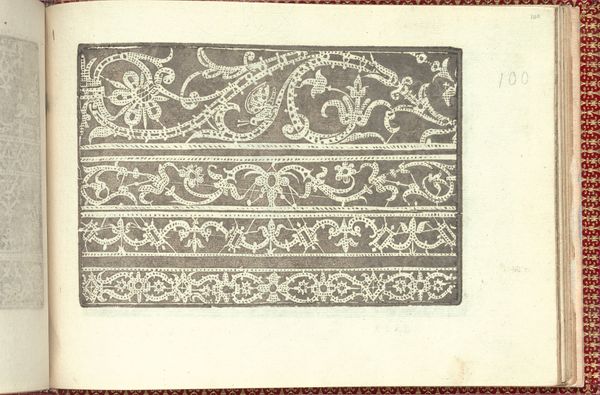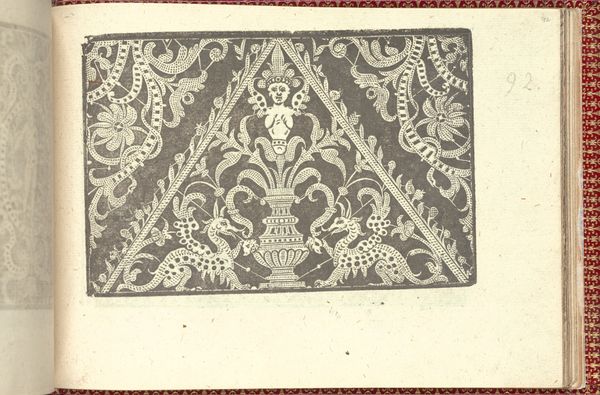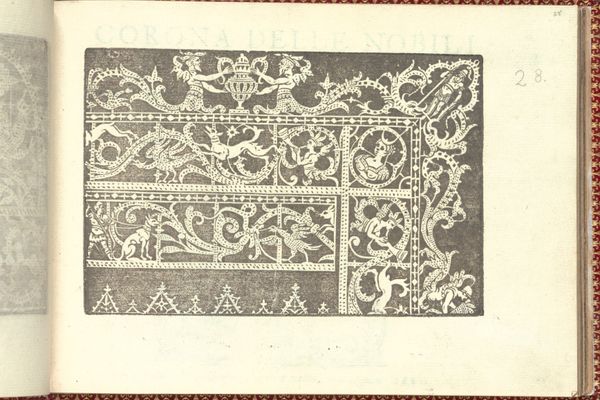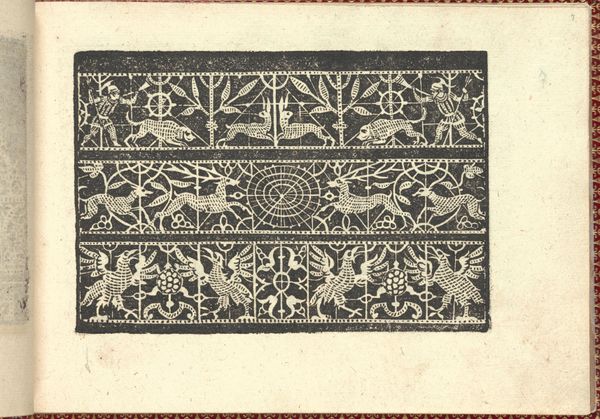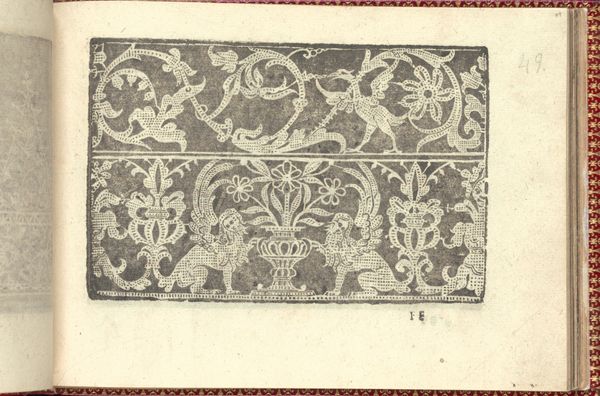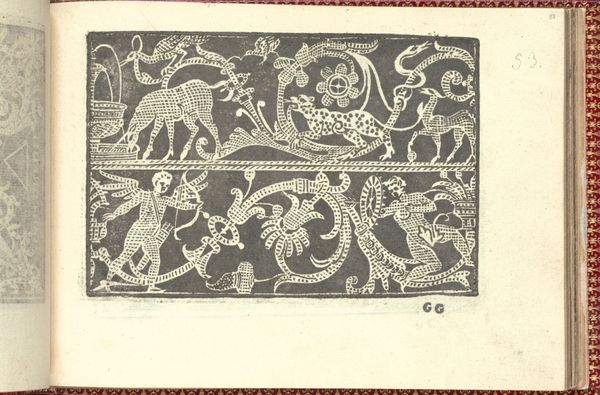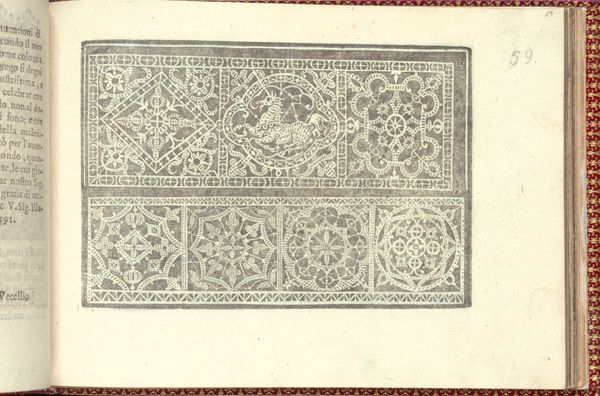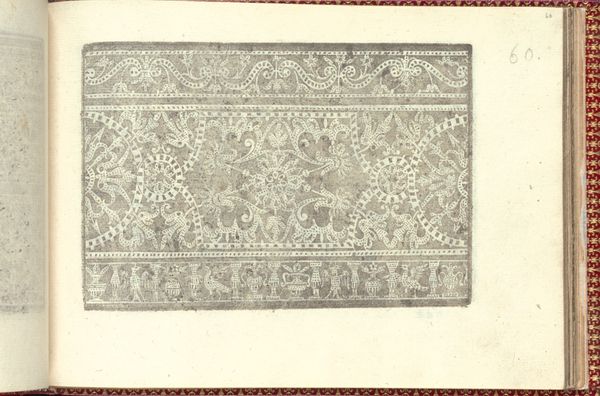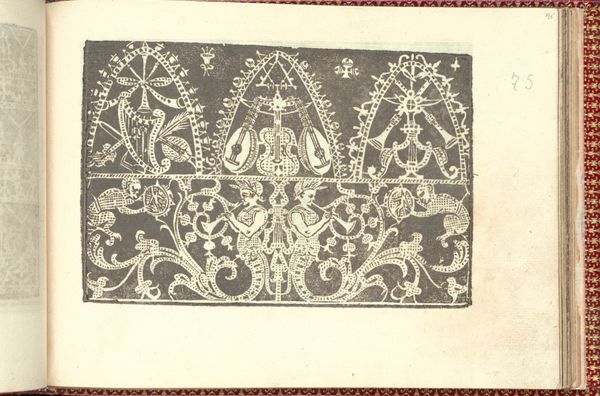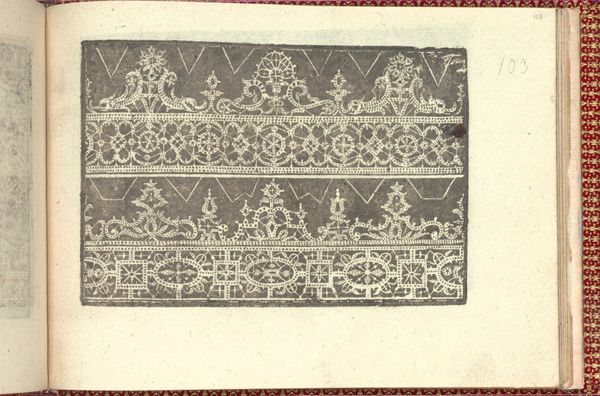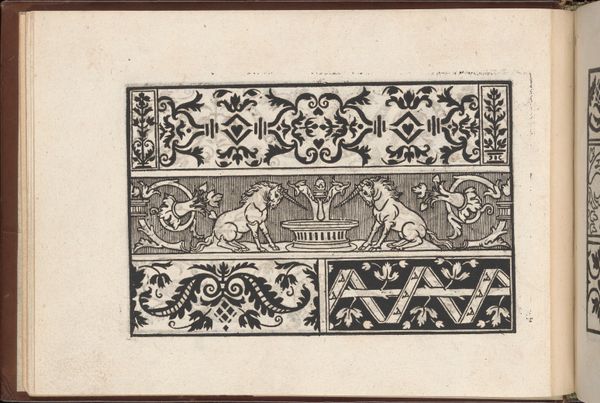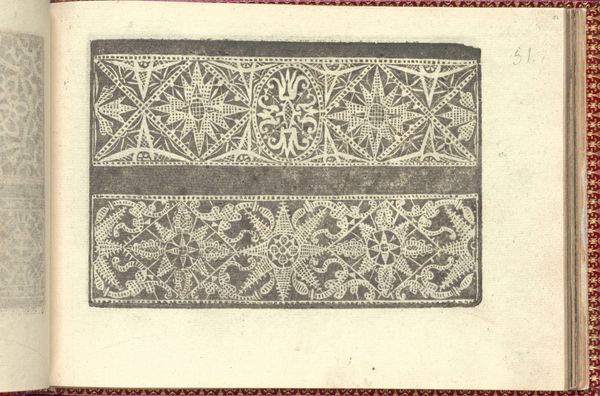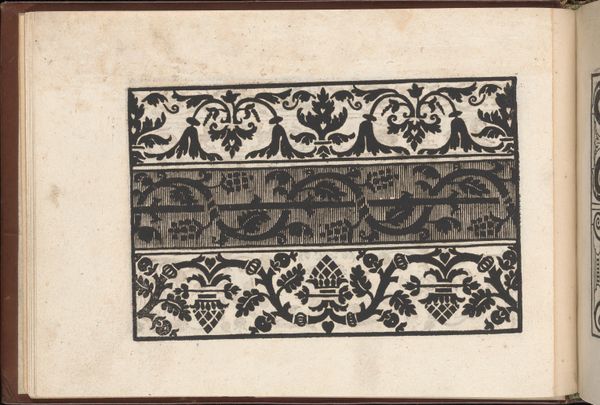
Corona delle Nobili et Virtuose Donne: Libro I-IV, page 67 (recto) 1601
0:00
0:00
drawing, print, engraving
#
drawing
#
medieval
# print
#
book
#
11_renaissance
#
engraving
Dimensions: Overall: 5 1/2 x 7 11/16 in. (14 x 19.5 cm)
Copyright: Public Domain
Curator: Oh, this page. I’ve always found this particular plate from Cesare Vecellio's "Corona delle Nobili et Virtuose Donne," published in 1601, absolutely captivating. It's an engraving, one of many such plates in this costume book, offering patterns for lace. Editor: Immediately, I get a feeling of playful seriousness. Those little creatures cavorting about! It’s like looking into a secret, stylized world. Very whimsical for something meant to instruct in lace making. Curator: Exactly! The purpose was practical—disseminating patterns throughout workshops—but the execution elevates it. Consider the material realities of the time: access to patterns wasn’t democratized as it is now. These engravings were valuable tools. The lines delineate where each stitch would go and function almost like an instructional diagram. Editor: I'm struck by how alive it feels despite being so precise. Look at how the animals interact with the vines. There's an underlying humor, perhaps? A bit of fantasy slipping into the practical. Also, what’s the size of the actual embroidery or lace which this detail can make? Curator: Good point. It demonstrates the way in which production relied not only on artisans skilled in needlework, but in all of these interconnected systems. This kind of printmaking democratized pattern access which, for that time, made all the difference in material circulation. It aided standardization. I can imagine women passing on these techniques in homes or workshops, contributing to both familial income, craft knowledge, and culture, too. Editor: Makes me wonder who owned the tools. And did all social classes have access to Vecellio's guides? Because those exotic beasts – giraffe, lions – are anything *but* the norm of rural life. So, who’s consuming this "fantasy lace" and what lives are being subtly elevated with its use? Curator: Absolutely! Vecellio was an engraver and painter from Venice during the height of La Serenissima. This specific edition would only be available for wealthy women due to its subject matter; they are all examples from nobility around Venice and beyond. There's a definite connection between the depicted designs, luxury status, and production processes in the 16th century textile economy. It demonstrates the cross-pollination between art and commerce in the Renaissance. Editor: Thinking about that balance between beauty and utility is really enriching my understanding here. All the more because it still feels so vibrant even across centuries and oceans of socioeconomics. I love it! Curator: I agree, it has aged extremely well. Thank you!
Comments
No comments
Be the first to comment and join the conversation on the ultimate creative platform.
